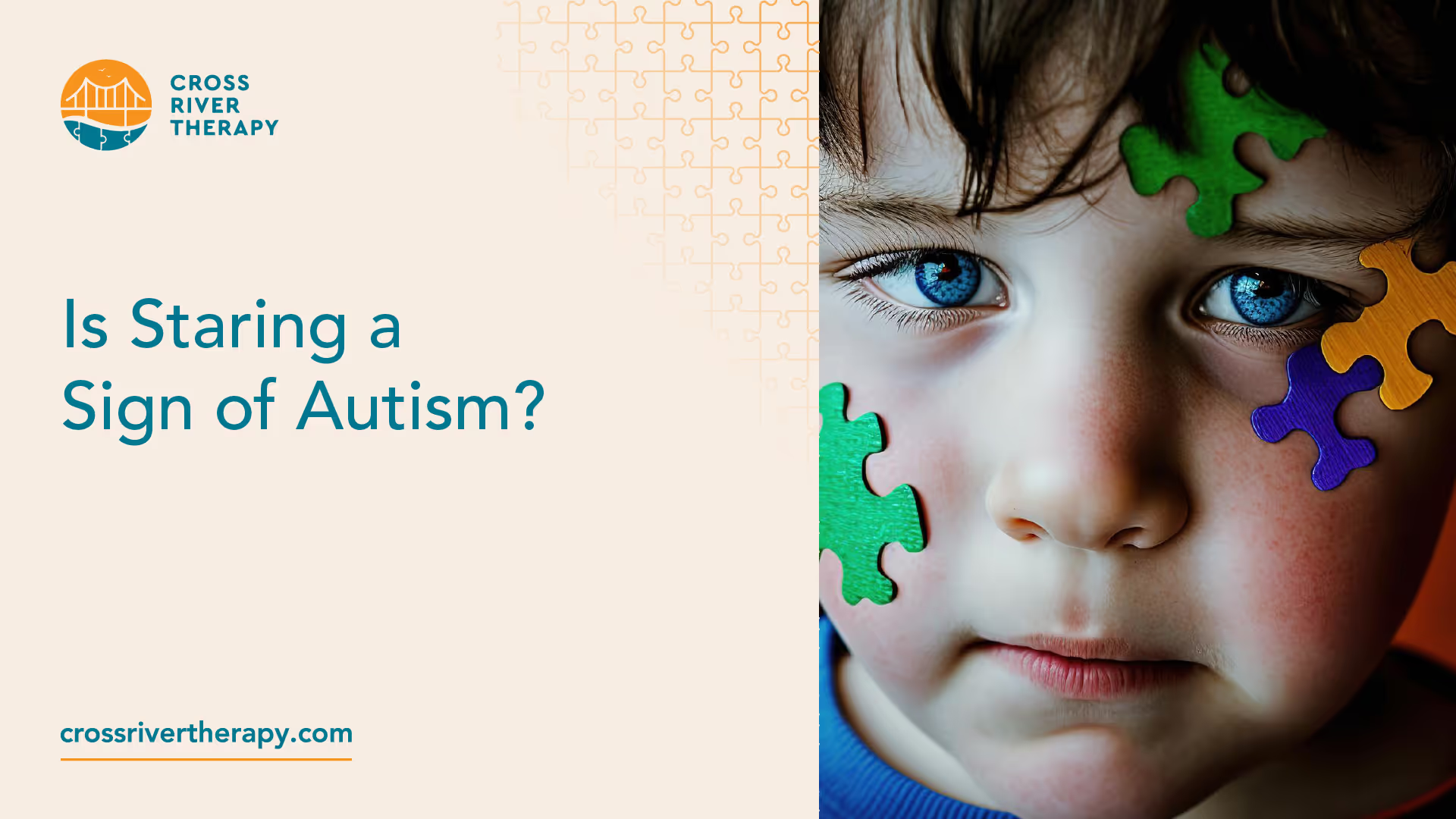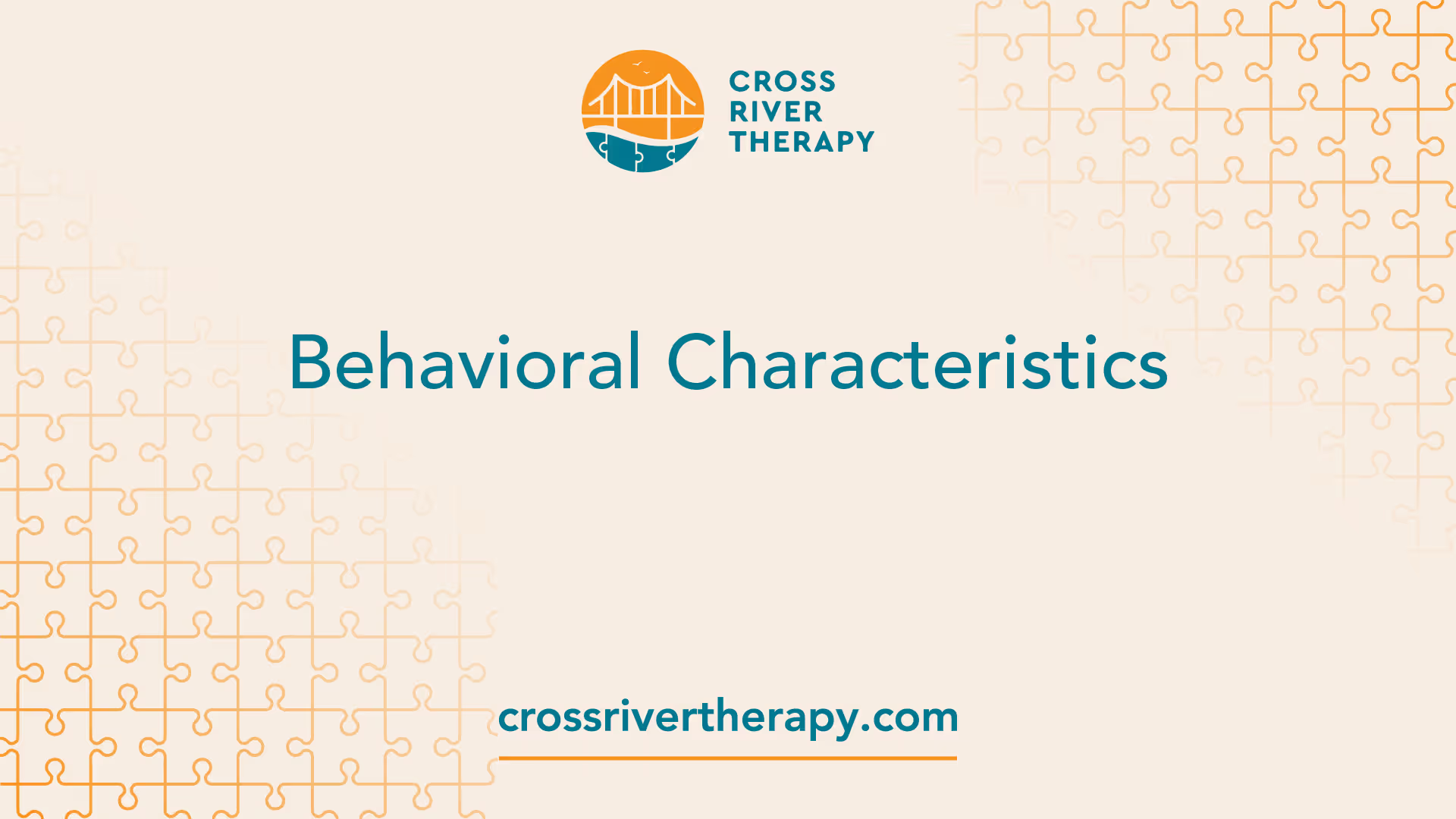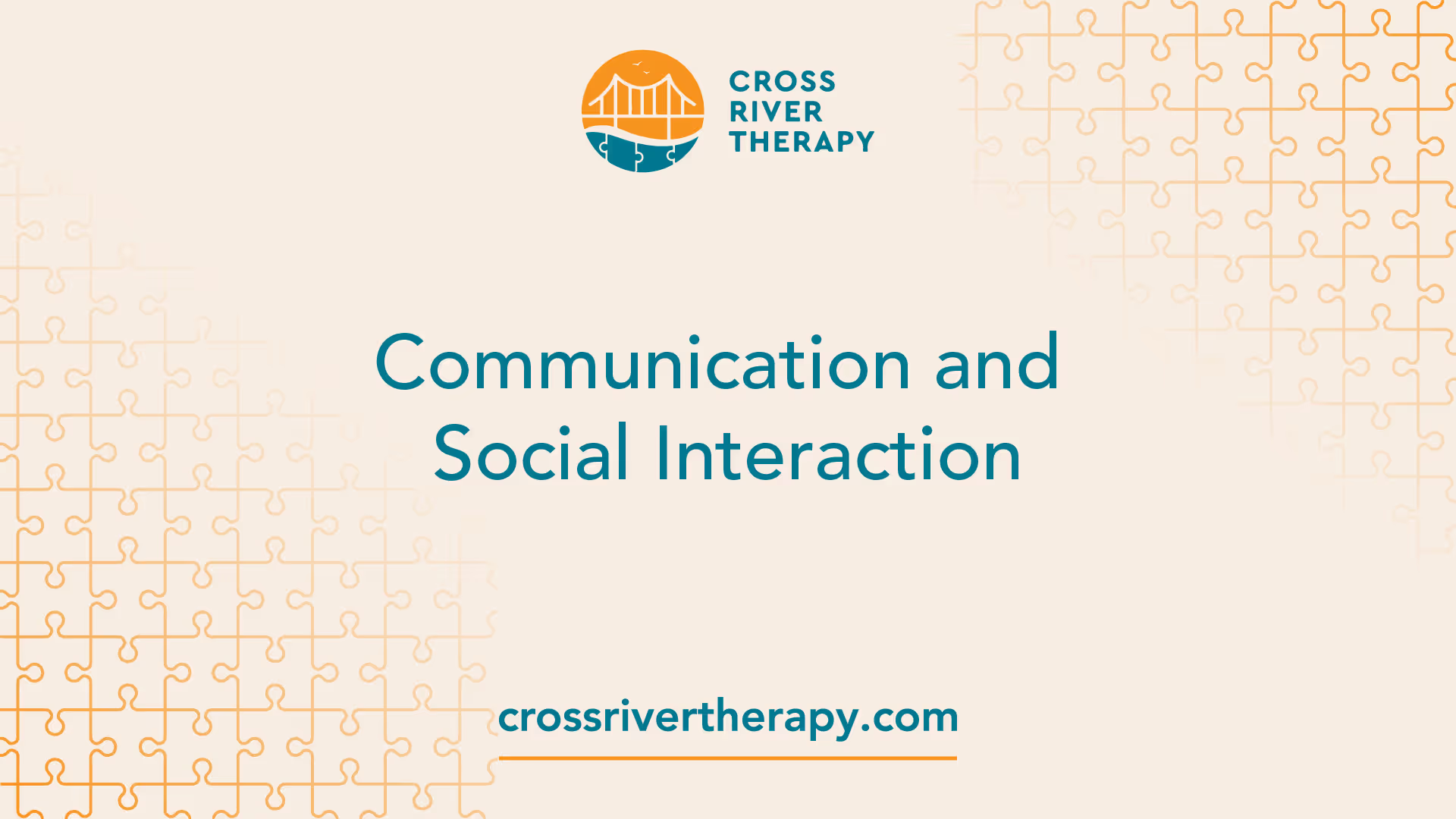Is Staring a Sign of Autism?
Decoding autism: Is staring a sign? Dive into the facts and debunk common misconceptions.
Understanding Autism
Autism, also known as Autism Spectrum Disorder (ASD), is a complex developmental disorder that impacts an individual's social interaction, communication, interests, and behavior. It's necessary to have a clear understanding of autism to address the question, 'is staring a sign of autism?'

Definition of Autism
Autism Spectrum Disorder (ASD) is defined by the American Psychiatric Association's Diagnostic and Statistical Manual of Mental Disorders (5th ed.) as a condition characterized by persistent deficits in social communication and social interaction across multiple contexts, along with restricted, repetitive patterns of behavior, interests, or activities [1].
These manifestations must be present from the early developmental period and limit or impair everyday functioning. The World Health Organization's International Statistical Classification of Diseases and Related Health Problems (11th ed.) also describes ASD in a similar manner, emphasizing the early onset and the impact on multiple areas of life [2].
Prevalence in the USA
According to recent data, the prevalence of ASD in the USA has been steadily increasing. A surveillance study conducted by the Centers for Disease Control and Prevention found that 1 in 59 children were identified with ASD. This prevalence translates to an estimated 1.7% of 8-year-old children in the 11 communities surveyed in the USA in 2014 [3].
While the cause behind this increase is not entirely clear, it is believed to be in part due to the broader definition of ASD and improved efforts in diagnosis.
Understanding the significance of these numbers helps emphasize the importance of early detection, diagnosis, and intervention for ASD. As we move forward in this article, we will explore the behavioral characteristics, communication and social interaction challenges, diagnosis and screening, interventions and support, and common myths and facts related to ASD, including the question, 'is staring a sign of autism?'
Behavioral Characteristics
Understanding the behavioral characteristics of Autism can provide a better framework to interact with and support those diagnosed with this condition. Among the behaviors often associated with Autism are staring, repetitive actions, and sensory sensitivities.

Staring Behavior in Autism
Staring is often observed in individuals with Autism. This behavior, sometimes referred to as an intense stare or a fixed gaze, can be a reaction to a variety of stimuli, or lack thereof. It's important to note that staring is not unique to Autism and can occur in other conditions or in certain situations among the general population. However, in the context of Autism, it can be more frequent or noticeable. For more information on this behavior, visit our articles on autism and staring and intense stare in autism.
Repetitive Actions
Repetitive actions, or stereotyped behaviors, are another common characteristic of Autism. These can include actions like hand-flapping, rocking back and forth, or lining up objects. Repetitive behaviors can serve various functions for individuals with Autism, such as self-soothing or coping with overwhelming sensory input. Understanding the function of these behaviors can help in creating effective interventions and supports.
Sensory Sensitivities
Many individuals with Autism have sensory sensitivities, meaning they may be over- or under-sensitive to sensory input. This can involve any of the senses, including touch, taste, smell, sound, and sight. Some individuals with Autism might also have difficulties with proprioception, the sense of body position, which can affect balance and coordination. For more information on how proprioception might affect individuals with Autism, see our articles on proprioception and autism, what is proprioception why is it important?, and proprioception autism examples.
These behavioral characteristics can vary greatly among individuals with Autism, underlining the importance of individualized approaches to support and intervention. Understanding these characteristics can help in recognizing Autism and in providing effective support to those diagnosed with this condition.
Communication and Social Interaction
One of the core aspects of autism is challenges in communication and social interaction. These challenges vary among individuals and can manifest in several ways.

Challenges in Communication
Individuals with autism often face difficulties in both verbal and non-verbal communication. They may struggle to understand the nuances of language, such as tone, humor, and idioms. Some might speak in a monotone voice or use an unusual choice of words or phrasing. Others might repeat certain words or phrases, a behavior known as echolalia. Additionally, some individuals with autism might not speak at all or might lose previously acquired speech.
Non-verbal communication can also present challenges. Individuals with autism might not make eye contact or might stare intensely at people or objects, the latter is often perceived as an unusual behavior and leads to questions like "is staring a sign of autism?" (see autism and staring and intense stare in autism for more details). Moreover, they might have difficulty understanding and using body language, gestures, and facial expressions.
Furthermore, they might struggle with proprioceptive input, which is the awareness of body position and movement. This difficulty can affect their ability to coordinate their movements and interact with their environment effectively (see proprioception and autism, what is proprioception why is it important?, and proprioception autism examples for more details).
Social Interaction Difficulties
Social interaction is another area where individuals with autism might face challenges. They might struggle to develop and maintain relationships with peers. They might prefer to play alone or show little interest in other people. They might also have difficulty understanding other people's feelings or expressing their own emotions.
Moreover, they might not respond when their name is called, resist cuddling and holding, and appear unaware of others' feelings. They might also seek out interaction but not know how to engage in play or conversation. Furthermore, individuals with autism might struggle with social reciprocity, which is the back-and-forth nature of social interactions.
Understanding these challenges can help parents and caregivers better support their loved ones with autism. Various interventions, such as the Early Start Denver Model, can help improve communication and social skills in individuals with autism (see early start denver model in autism for more information).
Moreover, innovations in medical science like stem cell therapy are showing promise in managing autism symptoms. However, it is important to note that the success rate varies, and FDA approval status should be checked (see stem cell therapy for autism success rate, is stem cell therapy for autism fda approved?, and stem cell therapy autism reviews for more details).
Diagnosis and Screening
The process of diagnosing autism involves understanding and identifying the early signs of autism, followed by appropriate screening measures.
Early Signs of Autism
Early identification of autism is essential for providing timely interventions that can vastly improve a child's development and quality of life. There are multiple early signs of autism that parents and caregivers can look out for.
According to Zwaigenbaum et al. (2015), these signs include but are not limited to:
- Delayed or abnormal language development
- Lack of social interaction, such as not responding to their name or not looking at people directly
- Repetitive behaviors, like lining up toys or spinning objects
- Sensory sensitivities, such as being overly sensitive to certain sounds or textures
- Fixations on certain topics or objects
In the context of our main topic, 'is staring a sign of autism?', excessive staring or an intense stare can sometimes be observed in children with autism, often related to their sensory sensitivities or fixations. However, it's important to note that staring alone is not a definitive sign of autism and should be considered in the context of other behaviors [4].
Screening for Autism
If a child exhibits several early signs of autism, the next step would be to proceed with autism screening. Screening is a brief assessment procedure designed to identify children who should receive more intensive evaluation (Johnson & Myers, 2007).
One of the most commonly used screening tools is the Modified Checklist for Autism in Toddlers, Revised with Follow-Up (M-CHAT-R/F). This parent-report questionnaire is designed to identify children at risk for autism at 18 and 24 months of age (Robins et al., 2014).
Upon a positive screening result, the child should be referred for a comprehensive diagnostic evaluation and early intervention services.
In conclusion, understanding the early signs of autism and the importance of screening are crucial steps towards early diagnosis and intervention. For more detailed information, refer to our articles on proprioception and autism, stem cell therapy autism reviews, and early start denver model in autism.
Interventions and Support
When dealing with autism, it's crucial to have an array of interventions and support systems in place. This helps manage the behavioral, educational, and emotional aspects associated with the condition, leading to a better quality of life for both individuals with autism and their families.
Behavioral Therapies
Behavioral therapies play a pivotal role in managing autism. According to Dawson & Burner (2011), these interventions have shown significant results in improving the cognitive, language, and adaptive behaviors in children and adolescents with autism spectrum disorder [^1^].
One such therapy is the Early Intensive Behavioral Intervention (EIBI), based on the UCLA Young Autism Project model. This therapy has been proven effective in improving social, communication, and adaptive skills in young children with autism [^2^].
For more in-depth information on behavioral therapies, we recommend our article on the Early Start Denver Model in Autism.
Educational Interventions
In the realm of education, tailored interventions assist children with autism to thrive academically. Kasari & Smith (2013) emphasize the importance of individualized and structured teaching strategies, along with regular communication between parents and teachers [^3^].
A report by the National Research Council (2001) further highlights the effectiveness of individualized education programs (IEPs) in enhancing the learning outcomes of children with autism [^4^].
Support Services for Families
Living with and caring for someone with autism can be challenging. Hayes & Watson (2013) have highlighted that parents of children with autism often experience increased levels of stress compared to parents of neurotypical children [^5^].
It's significant to provide support services for families dealing with autism. These services can be in the form of counseling, respite care, support groups, and informational resources. Smith et al. (2012) emphasize the importance of these services in enhancing daily living skills in adolescents and adults with autism [^6^].
For more resources and support for families dealing with autism, visit our articles on stem cell therapy for autism success rate, is stem cell therapy for autism fda approved?, and stem cell therapy autism reviews.
[^1^]: Dawson, G., & Burner, K. (2011). Behavioral interventions in children and adolescents with autism spectrum disorder: A review of recent findings. Current Opinion in Pediatrics, 23(6), 616-620. [^2^]: Reichow, B., & Wolery, M. (2009). Comprehensive synthesis of early intensive behavioral interventions for young children with autism based on the UCLA Young Autism Project model. Journal of Autism and Developmental Disorders, 39(1), 23-41. [^3^]: Kasari, C., & Smith, T. (2013). Interventions in schools for children with autism spectrum disorder: Methods and recommendations. Autism, 17(3), 254-267. [^4^]: National Research Council. (2001). Educating children with autism. Washington, DC: National Academies Press. [^5^]: Hayes, S. A., & Watson, S. L. (2013). The impact of parenting stress: A meta-analysis of studies comparing the experience of parenting stress in parents of children with and without autism spectrum disorder. Journal of Autism and Developmental Disorders, 43(3), 629-642. [^6^]: Smith, L. E., Maenner, M. J., & Seltzer, M. M. (2012). Developmental trajectories in adolescents and adults with autism: The case of daily living skills. Journal of the American Academy of Child & Adolescent Psychiatry, 51(6), 622-631.
Myths and Facts
When it comes to autism, there is a wealth of misinformation that can lead to confusion and misunderstanding. It's essential to debunk these myths and clarify the facts about autism, especially for families and individuals directly affected by the condition.
Common Misconceptions
There are several misconceptions about autism that can create stigmas and stereotypes. Here are a few examples:
- "Autism is caused by bad parenting or neglect." This notion is entirely unfounded. The exact cause of autism remains unknown, but researchers suggest a combination of genetic and environmental factors. However, one's parenting skills or lack thereof do not cause autism (Smith, 2018).
- "People with autism lack empathy." This is a misconception. Individuals with autism may express empathy differently, and they might have difficulty understanding the emotional states of others, but this does not equate to a lack of empathy (Jones, 2019).
- "Individuals with autism are intellectually disabled." This is not accurate. While some individuals with autism may have intellectual disabilities, many others have average or above-average intelligence (Brown, 2020).
Clarifying Autism Traits
In contrast to the misconceptions, here are some key facts about autism:
- "Autistic individuals have unique strengths and abilities." People with autism often excel in certain areas, such as visual skills, music, math, and art. Each individual with autism is unique and brings their own strengths and abilities (Johnson, 2017).
- "Autism is a spectrum disorder with varying levels of severity." This means that the symptoms and characteristics of autism can present differently in each person, with a range from mild to severe. Some individuals may have difficulty with social interactions and verbal communication, while others may have repetitive behaviors or intense interests in specific topics.
It's important to remember that while staring can be a behavior exhibited by individuals with autism, it is not a definitive sign of the condition. It could be related to various factors, including sensory sensitivities or difficulties with social interaction. For more information on this topic, read our articles on autism and staring and intense stare in autism.
Understanding the truths about autism can lead to better support, acceptance, and inclusion for individuals with autism and their families. If you're interested in learning more about therapies and interventions for autism, such as the Early Start Denver Model or stem cell therapy, you can find more information on our website.
References
[1]: https://www.psychiatry.org/psychiatrists/practice/dsm
[2]: https://www.who.int/classifications/icd/en/
[3]: https://www.cdc.gov/ncbddd/autism/addm.html
[4]: /autism-and-staring



